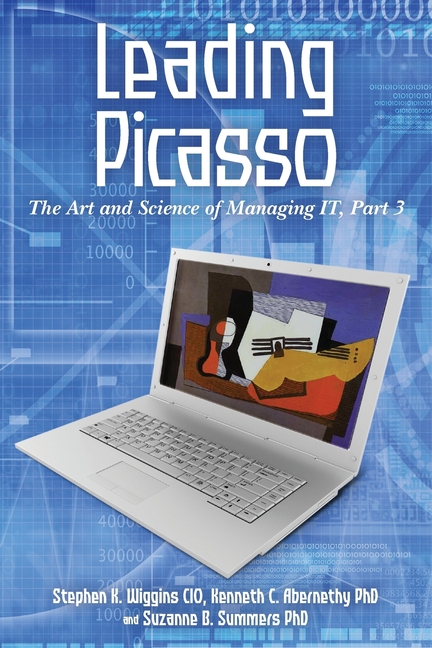
Leading Picasso: The Art and Science of Managing IT, Part 3
PRINT ON DEMAND— Shipping will be delayed 1-6 weeks for printing
(Depends on publisher)
(Depends on publisher)
This book explores a set of concepts that are fundamental for successful leadership of an Information Technology (IT) business. The ideas and concepts explored here have emerged from a ten-year collaboration between the authors in creating professional development programs to support and enhance the remarkable success of a particular IT company - the Information Systems (I/S) Division of BlueCross BlueShield of South Carolina.
| Quantity | Price | Discount |
|---|---|---|
| List Price | $24.95 |
Non-returnable discount pricing
$24.95
Book Information
| Publisher: | Createspace Independent Publishing Platform |
|---|---|
| Publish Date: | 01/18/2017 |
| Pages: | 266 |
| ISBN-13: | 9781500188610 |
| ISBN-10: | 1500188611 |
| Language: | English |
Full Description
This book explores a set of concepts that are fundamental for successful leadership of an Information Technology (IT) business. The ideas and concepts explored here have emerged from a ten-year collaboration between the authors in creating professional development programs to support and enhance the remarkable success of a particular IT company - the Information Systems (I/S) Division of BlueCross BlueShield of South Carolina. However, the book is about more than one company's success. Anyone facing the challenge of leading an IT company, an IT unit, or IT projects of most any size will find ideas and concepts here that resonate with their experiences and that will provoke them to think in new and more productive ways about the work they do. This book is the third of a three-book series on the art and science of managing an IT company. In the first book of the series, Picasso on a Schedule, a unique IT organizational structure called the Hierarchical Matrix was described and a framework of repeatable processes for its Matrix component was defined. The Matrix component of the structure focuses on producing the quality technical work that IT clients expect and demand. The Hierarchy component of the structure focuses on managing the resources necessary for the production of that work. In the second book of the series, Managing Picasso, the study of the Hierarchical Matrix was extended with a description of a framework of repeatable processes for the Hierarchy (Management) component of the structure. The Hierarchy's mission has two major features. First it must enable the IT organization's current success by creating and managing a technical workforce that consistently produces excellent client value. Second, it must ensure that the organization remains positioned for long-term success. To accomplish this two-fold mission, those in the Hierarchy must have the technical competence to deal with the creative nature of IT work, and the business competence to employ the best-practices under which successful non-IT businesses operate. Managing Picasso is an accessible reference guide to a framework of repeatable IT management processes that enable the accomplishment of this mission. The current book, Leading Picasso, completes the study of the Hierarchical Matrix with a focus on the leadership concepts necessary to enable both the Hierarchy and the Matrix components to be successful in carrying out their respective responsibilities. Both formal and informal leadership are required for this success, and Leading Picasso addresses both types of leadership, offering a conceptual leadership framework and practical techniques for applying this framework to the work of leadership. Just as is true within the day-to-day work of both the Hierarchy and the Matrix, leadership involves a delicate blend of art and science. Indeed, leadership depends heavily on applying the arts of intuition, vision, courage, and steadfastness in setting direction, then guiding and inspiring other people to accomplish a desired result through influence. This book explores how leaders can accomplish this by employing a set of skills and behaviors that constitute the strengths that actually define a Leader and enable the effective employment of Culture and Vision necessary to successfully adapt their organization for success in changing circumstances.

